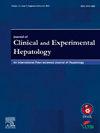Minimally Invasive Liver Transplantation: The Recipient Operation
IF 3.3
Q2 GASTROENTEROLOGY & HEPATOLOGY
Journal of Clinical and Experimental Hepatology
Pub Date : 2025-02-21
DOI:10.1016/j.jceh.2025.102532
引用次数: 0
Abstract
The introduction of minimally invasive donor hepatectomy (MIDH) operation saw the initiation and incorporation of minimal access surgery into the field of liver transplantation (LT). Several studies, meta-analyses, and consensus guidelines have demonstrated the undisputed advantages of the MIDH operation. Given these positive trends, and the increasing acceptance and acknowledgment of the safety of MIDH among the transplant community, there has been an intuitive thrust to further push the boundaries of what was initially considered unfeasible – to that of the minimally invasive liver transplant recipient surgery (MIRS). Given its extremely steep learning curve and undefined safety profile, the MIRS procedure remains limited to less than a handful of LT units across the world. It does, however, appear inevitable that the MIRS is likely to be performed widely in the future. Nonetheless, embarking on such a project needs not only just a gifted and trained surgeon, but a focussed and united effort of the whole team. This article reviews the current evidence, debates the early trade-offs involved in the introduction of the operation, and importantly, presents a safe and structured algorithm for teams interested in embarking on this very complex, yet exciting new realm of LT.
微创肝移植:受体手术
微创供肝切除术(MIDH)手术的引入标志着微创手术进入肝移植(LT)领域的开始和纳入。一些研究、荟萃分析和共识指南已经证明了MIDH手术无可争议的优势。鉴于这些积极的趋势,以及移植界对MIDH安全性的接受度和认可度越来越高,有一种直观的推动力,进一步推动最初被认为不可行的界限-微创肝移植受体手术(MIRS)。考虑到其极其陡峭的学习曲线和未定义的安全性,MIRS手术在世界范围内仍然局限于少数LT单位。然而,MIRS在未来的广泛应用似乎是不可避免的。然而,开展这样一个项目不仅需要一个有天赋和训练有素的外科医生,还需要整个团队的集中和团结努力。本文回顾了目前的证据,讨论了引入该操作所涉及的早期权衡,重要的是,为有兴趣开始这个非常复杂但令人兴奋的LT新领域的团队提供了一个安全且结构化的算法。
本文章由计算机程序翻译,如有差异,请以英文原文为准。
求助全文
约1分钟内获得全文
求助全文
来源期刊

Journal of Clinical and Experimental Hepatology
GASTROENTEROLOGY & HEPATOLOGY-
CiteScore
4.90
自引率
16.70%
发文量
537
审稿时长
64 days
 求助内容:
求助内容: 应助结果提醒方式:
应助结果提醒方式:


